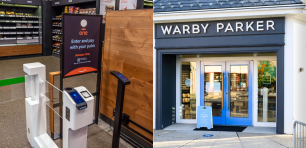
Source: Adobe Stock
Science-fiction flick Minority Report captivated audiences in 2002 with its futuristic portrayal of a world where technology and law enforcement converge to prevent crimes before they happen.
While it employs a generous share of creative license, the overarching premise of this Tom Cruise classic remains relevant 21 years later as retailers battle the intense risks associated with an unprecedented global crime wave.
With great power comes great responsibility, and the adage couldn’t be more fitting for retailers who are beginning to harness the capabilities of artificial intelligence (AI).
The premise of using technology to foresee and address potential problems resonates in our contemporary discussions about AI in retail.
In addition to being responsive to criminal activity, AI will allow retailers to predict trends and behaviours, giving them the tools to proactively shape their strategies.
AI algorithms can analyse vast amounts of data to forecast buying patterns, helping retailers optimise inventory, tailor marketing campaigns and enhance customer experiences.
With intense competition in today’s retail sector, integrating technology and customer experience isn’t just a trend — it’s a survival strategy.
Technology such as AI is a key driver, streamlining operations and improving customer-brand interactions across the retail value chain. As the industry shifts towards ever-increasing technological innovations, AI’s role is set to grow.
AI today is already making astounding progress, opening a whole new world of possibilities — and a can of worms in the process.
The Australian Retailers Association recently commented on a discussion paper on the safe and responsible use of AI. It’s a sensitive discussion, but one that must be had – sooner, not later.
We believe there should be an agreed Australian framework for the responsible use of AI, with a risk-based approach to determining limitations.
The journey of incorporating AI seamlessly into the realm of retail requires continuous learning and dynamic training programs. Having appropriate AI savoir-faire will be vital to avoid misuse.
Emerging technologies sit at a crossroads in the retail landscape, where opportunities for growth and prosperity intertwine with risks and responsibilities.
While its capabilities unfurl vistas of growth and operational finesse, retailers bear the mantle as ethical custodians of this new technology.
Some examples of AI use in the US retail landscape serve as a blueprint for its remarkable potential.
Want your taco at breakneck speed? Taco Bell became the first restaurant to allow customers to order food directly through AI. The Tacobot takes orders from customers and passes them straight to the kitchen, serving up guests with quippy remarks after each order.
Meanwhile, Lowes created the LoweBot to help customers find their way around the store and get the items they need. LoweBots roam the store and ask customers simple questions to find out what they’re looking for. LoweBots also monitor inventory, so the store knows what items need to be restocked.
In a different approach, Walgreens uses data from the number of anti-viral prescriptions it fills at more than 8,000 locations to track the spread of the flu. The online, interactive map not only helps customers know how bad the flu is in their area, but also helps Walgreens stock more inventory of flu-related products in infected regions.
Even the most sceptical customers will find AI more palatable if they’re also reaping the benefits of these new technologies.
The implementation of AI presents a challenge; a delicate balancing act. Retailers will have to manifest a blend of ethical propriety and appropriate transparency, innovation waltzing hand in hand with accountability.
It’s a mammoth responsibility but done right will pay dividends.
AI may be retail’s next crime fighter, but that only scrapes the surface of its possibilities.
Embracing this technology has the potential to enhance the customer experience, while simultaneously reducing costs for retailers.
It’s a win-win if implemented carefully.
Paul Zahra is the CEO of the Australian Retailers Association.
Handpicked for you

Experts call for an Aussie GPT as AI gains momentum



COMMENTS
SmartCompany is committed to hosting lively discussions. Help us keep the conversation useful, interesting and welcoming. We aim to publish comments quickly in the interest of promoting robust conversation, but we’re a small team and we deploy filters to protect against legal risk. Occasionally your comment may be held up while it is being reviewed, but we’re working as fast as we can to keep the conversation rolling.
The SmartCompany comment section is members-only content. Please subscribe to leave a comment.
The SmartCompany comment section is members-only content. Please login to leave a comment.